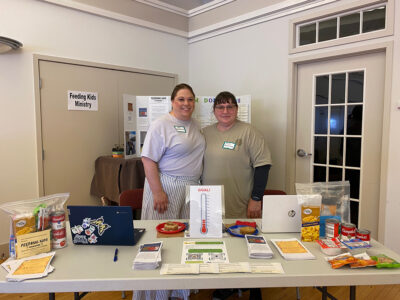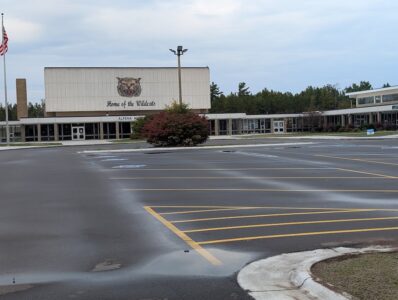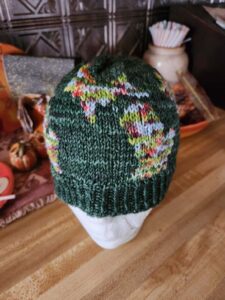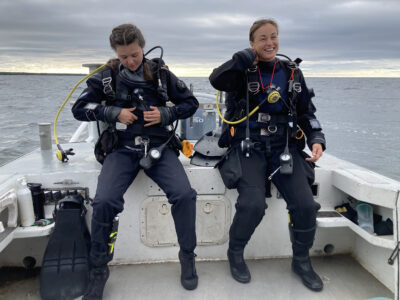Successful artificial reefs and more research in Thunder Bay
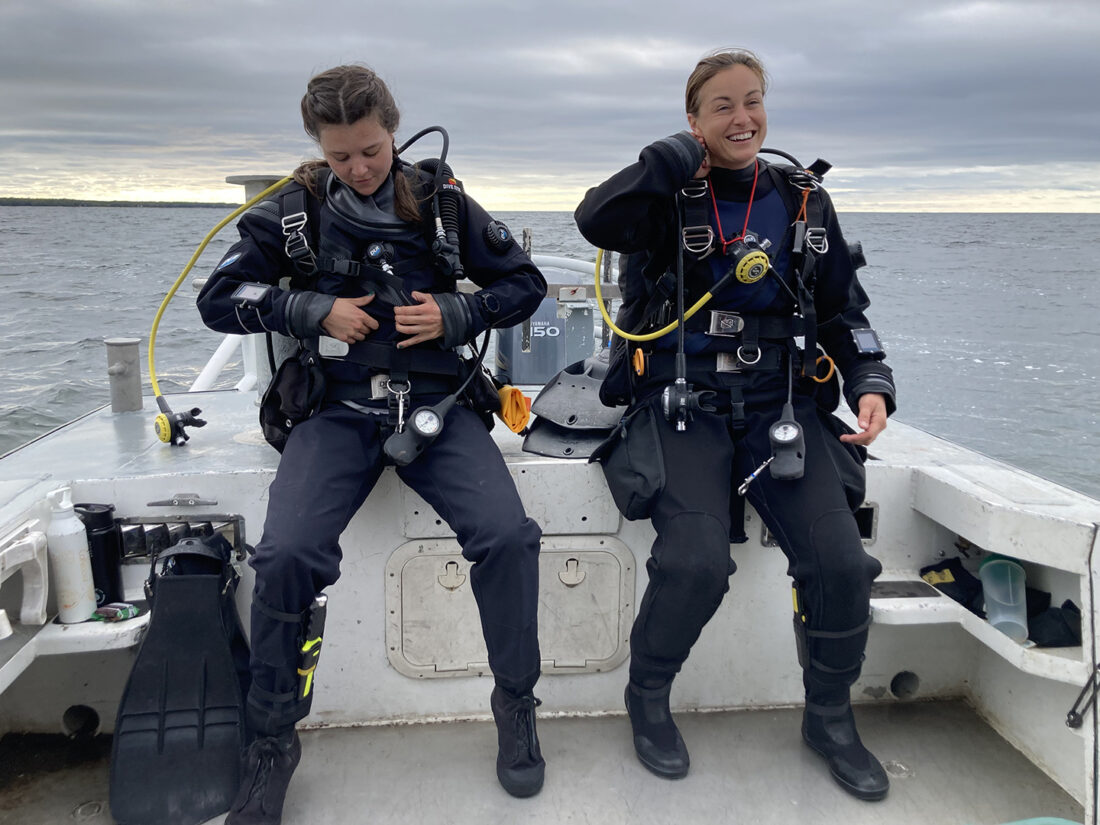
Courtesy Photo On Friday, sanctuary divers Andi Yoxsimer, left, and Cassandra Sadler, right, are seen preparing to deploy fish egg traps at the Thunder Bay Reef in Thunder Bay National Marine Sanctuary waters in this photo provided by Stephanie Gandulla.
ALPENA — Dr. Ellen Marsden, a professor at the University of Vermont, was a key partner in creating 29 artificial reefs in Thunder Bay National Marine Sanctuary (TBNMS) waters that have improved the fish population in Lake Huron.
Marsden told The News that back in 2009 she was contacted by a consulting firm who was partnered with the Michigan Department of Environment, Great Lakes, and Energy (EGLE), formerly Michigan Department of Environmental Quality (DEQ), to help design an artificial reef system in TBNMS. This artificial reef system was needed to encourage fish to spawn there because cement dust had made the original reef system inhospitable for lake trout.
Marsden said she had prior experience working on artificial reefs before signing up for the TBNMS project.
“They basically said, ‘Can you help us design a reef?’ and I said ‘Bring it on!'” she added.
According to Marsden, the reefs were first designed in 2010 and were officially installed in 2011. Since then, she said the reefs have been “incredibly successful” in supporting fish populations in TBNMS.
“They came in and spawned on them quite quickly, within a couple of years, and they put down eggs and the eggs hatched,” Marsden said. Now we’ve got wild fish coming back to those reefs.”
Marsden said a secondary goal of the project was to build something sustainable that would last a long time.
“It’s not good if it only lasts a few years and then the reefs collapse or scatter,” she explained. “That becomes more peer research, ‘Can we build an artificial reef that works and has longevity? Yes, absolutely!'”
According to Marsden, the concept of “artificial reefs” has been an ongoing experiment for hundreds of years.
“The idea that you could add something to an otherwise somewhat barren area in a lake or an ocean and fish will aggregate … that’s been known evidence since people started the fish,” she said.
Marsden explained that there are monitoring wells within the reefs that allow for researchers to track fish activity, water temperature, and more. She said this information is invaluable because that type of monitoring is nonexistent in natural reefs systems.
Overall, Marsden said that TBNMS staff members have been “fantastic” partners to work with on the reef project.
“We could not have done this without them, particularly the diving,” Marsden said.
Marsden explained that TBNMS divers have been helpful in collecting data and also educating Marsden about the sanctuary.
“We found a wreck for them accidentally,” Marsden said. “Knowledge of the bay has been tremendous, so I can’t speak highly enough about them.”
Marsden told The News that she was starting “Phase Two” of the project on Friday, researching the presence of whitefish in the reefs.
“The reefs continue to have scientific longevity with more and more projects coming in,” Marsden said.
Kayla Wikaryasz can be reached at 989-358-5688 or kwikaryasz@TheAlpenaNews.com.

